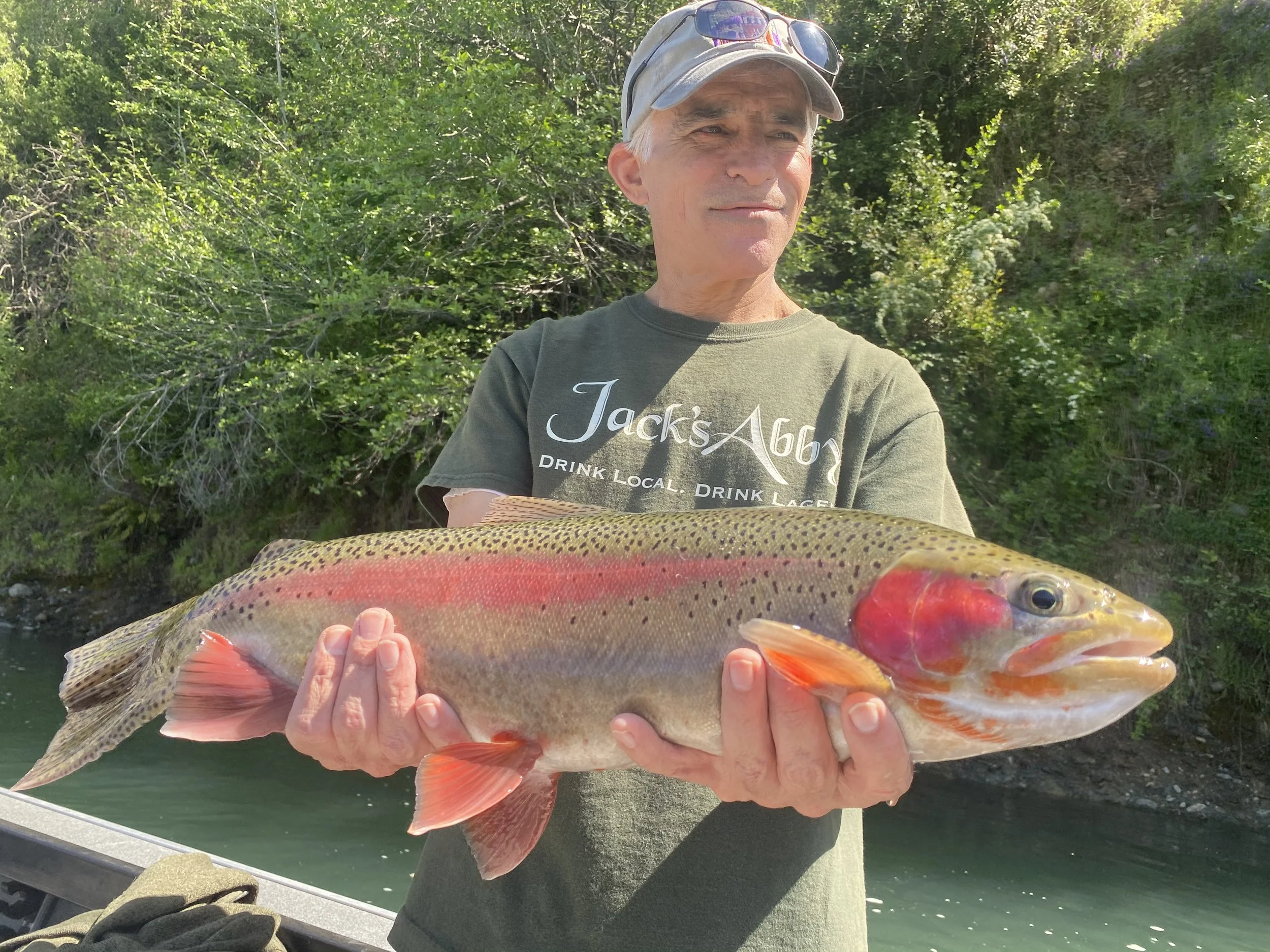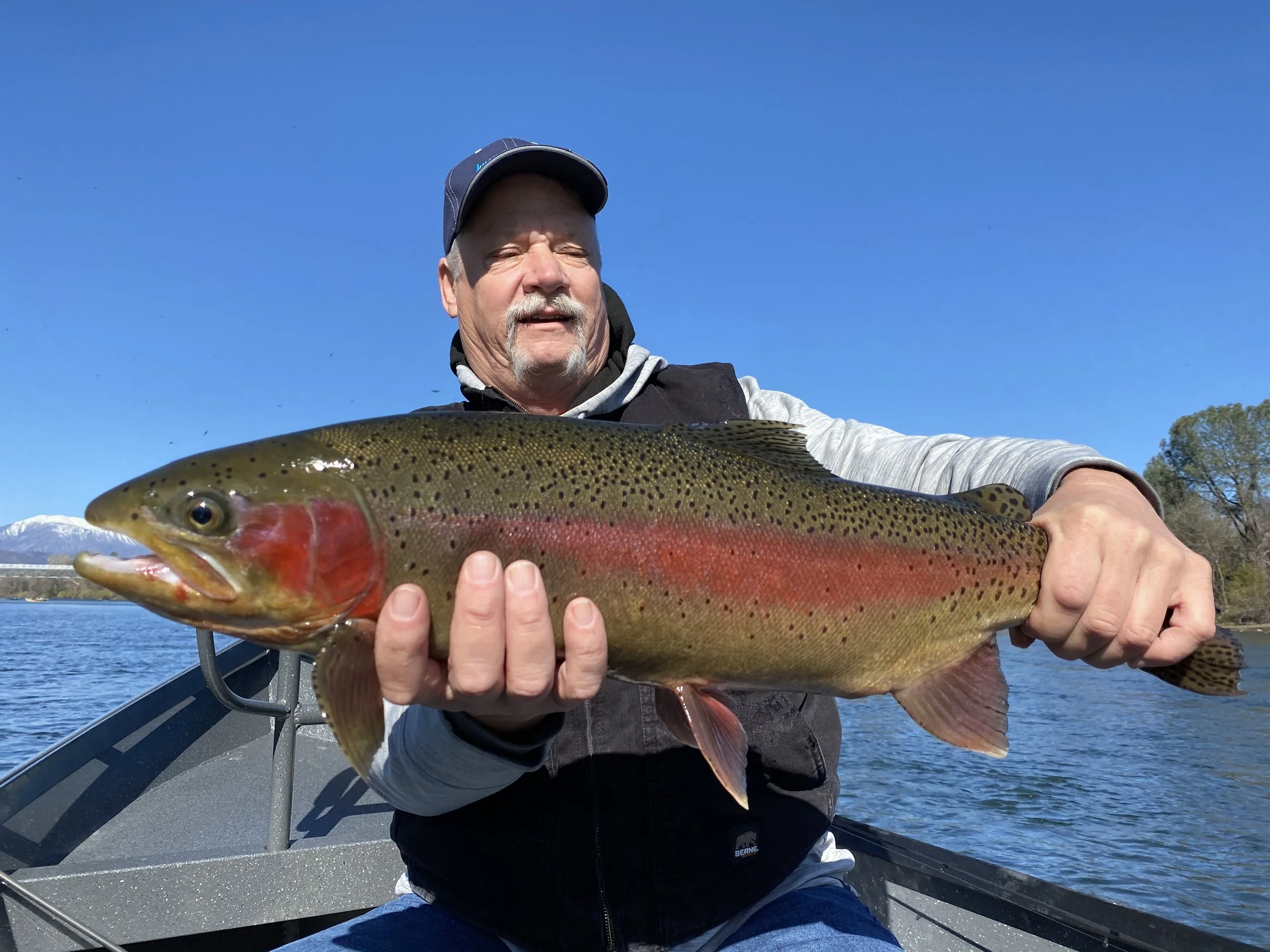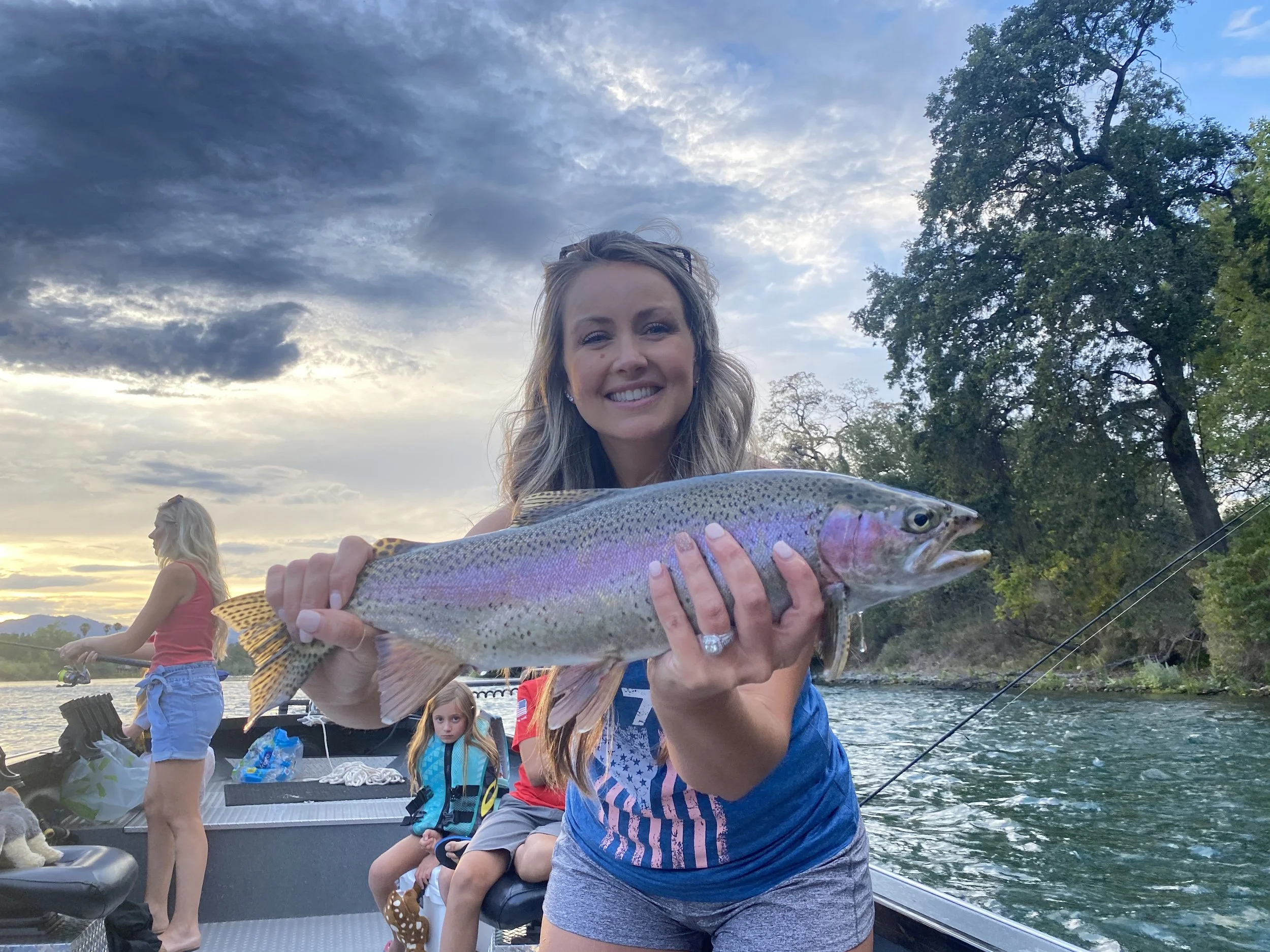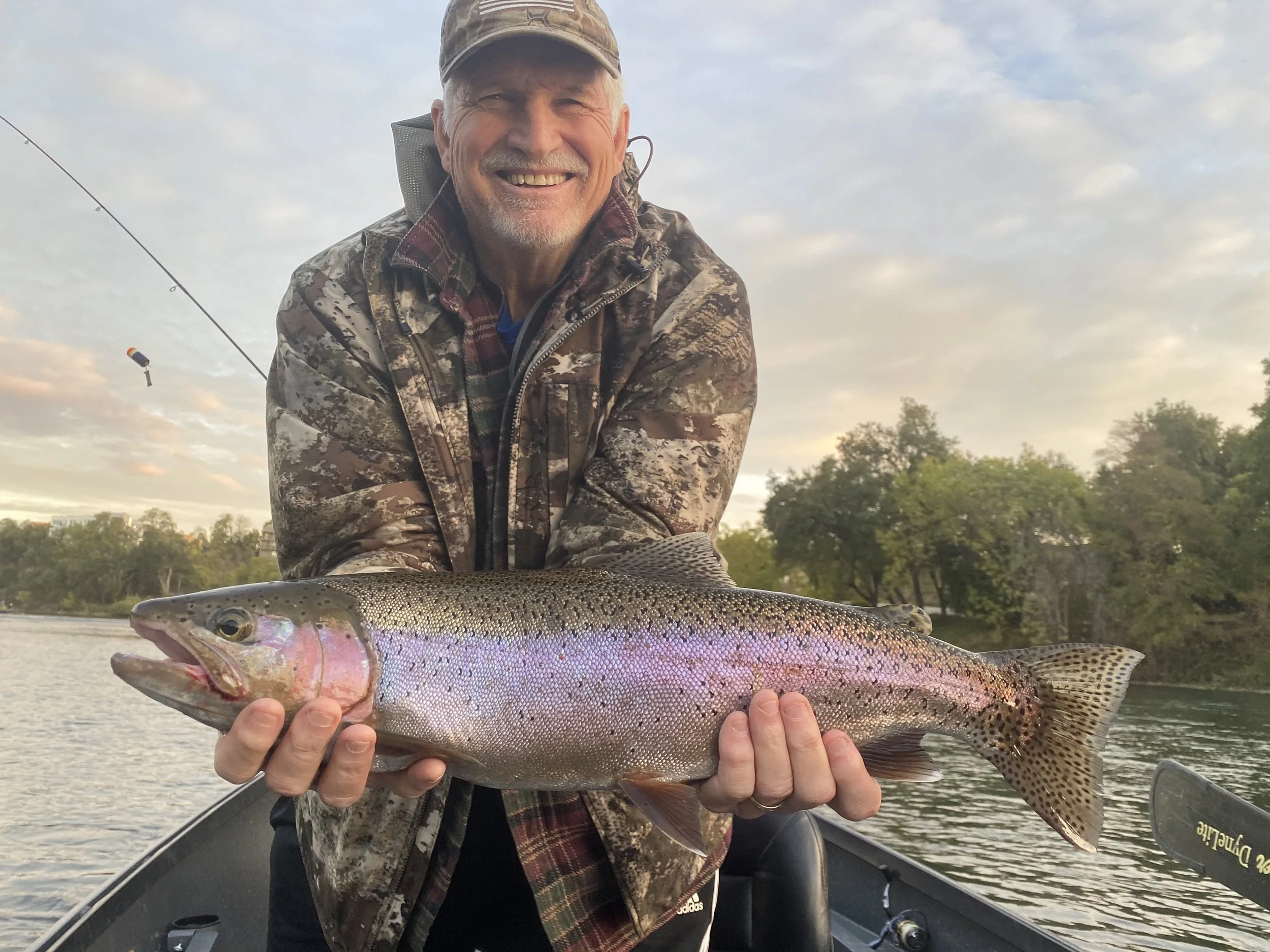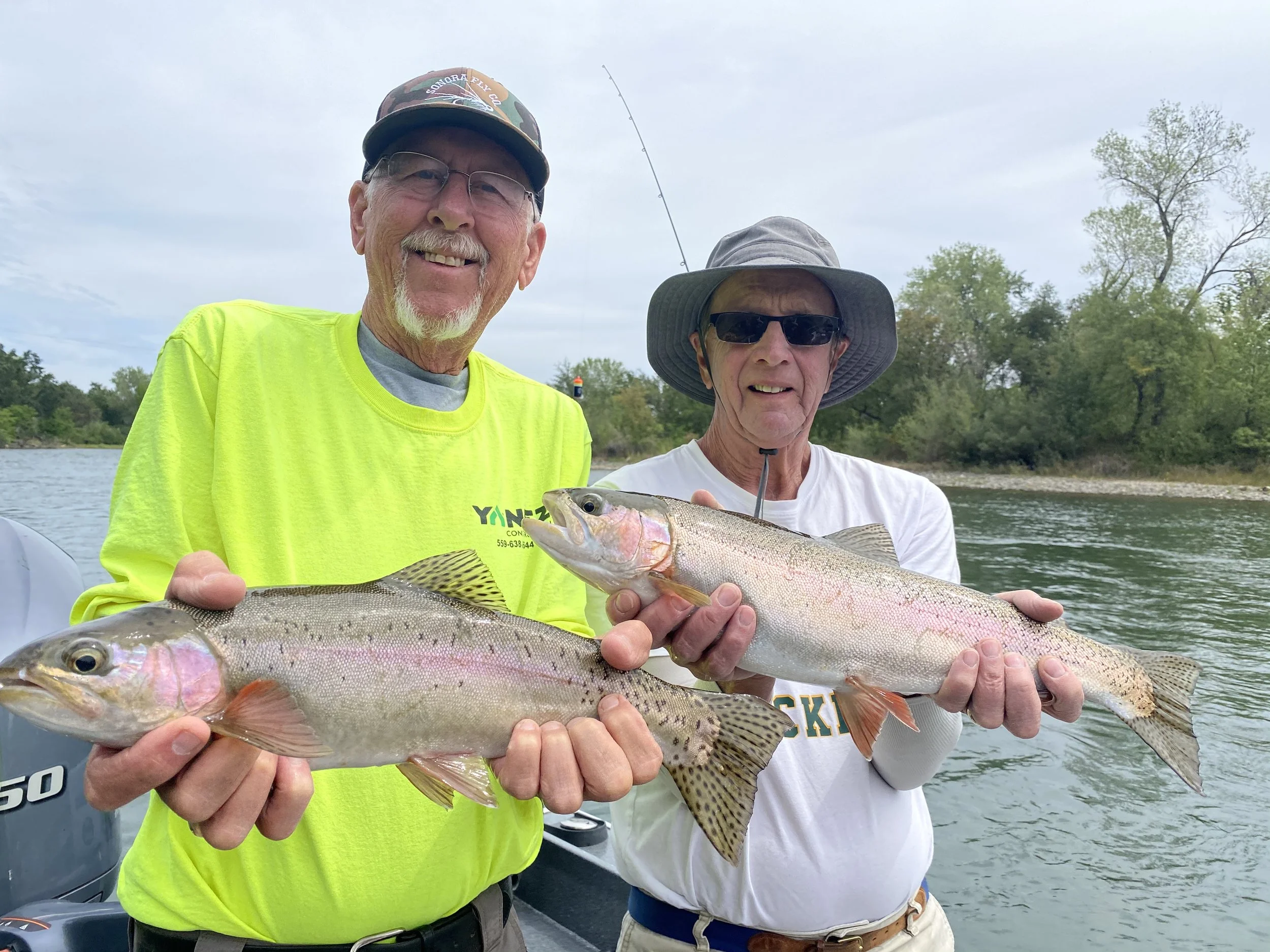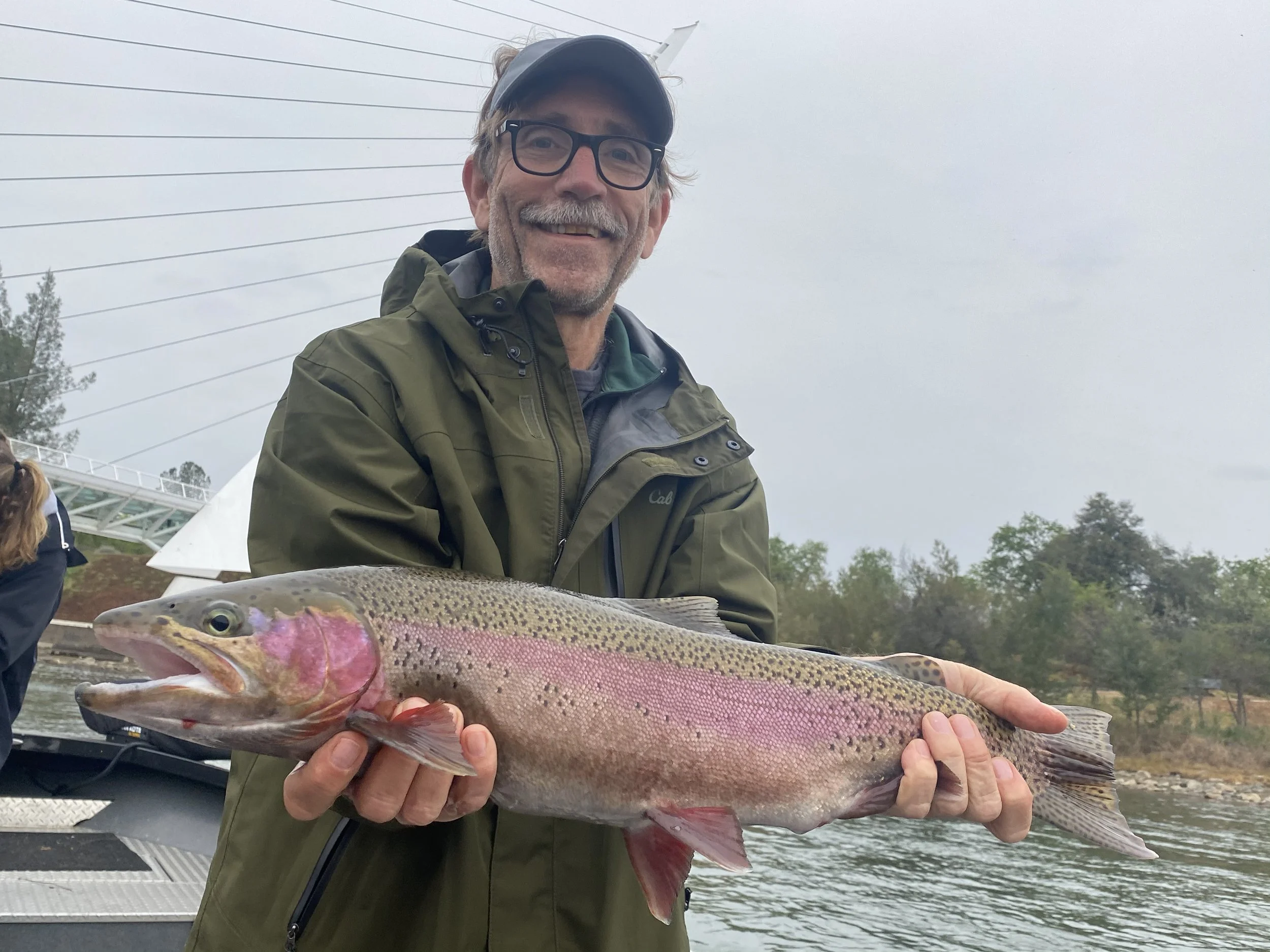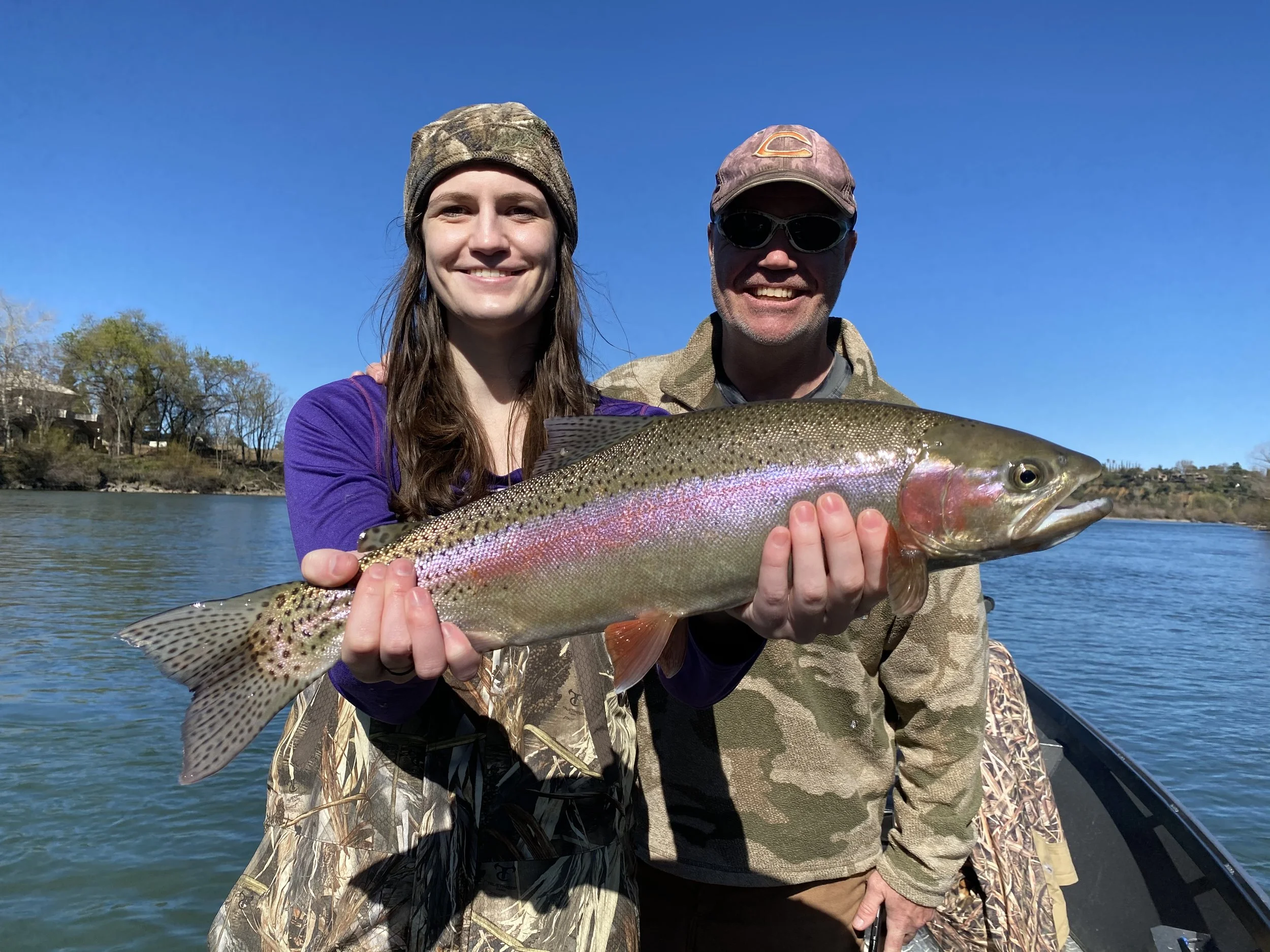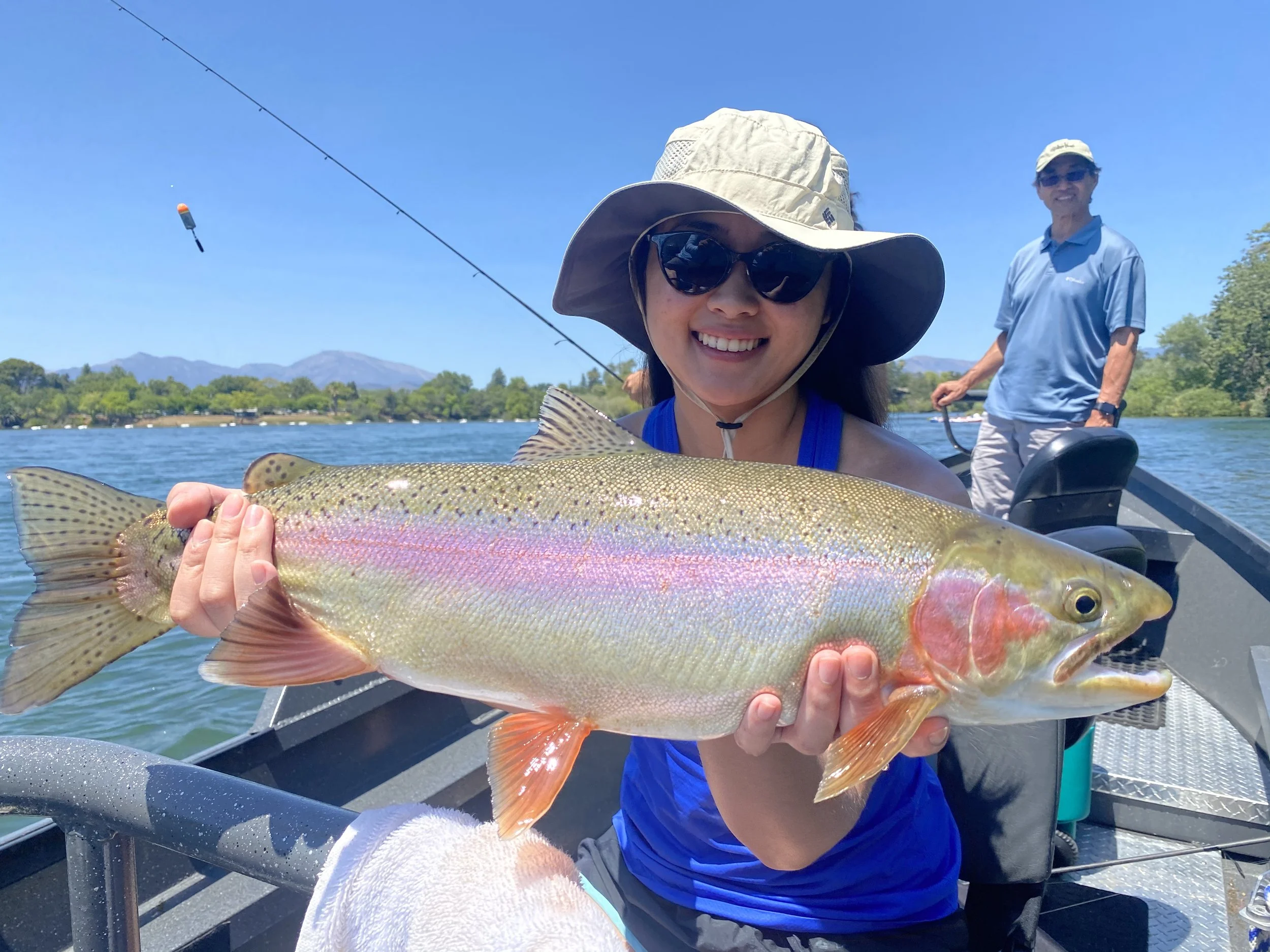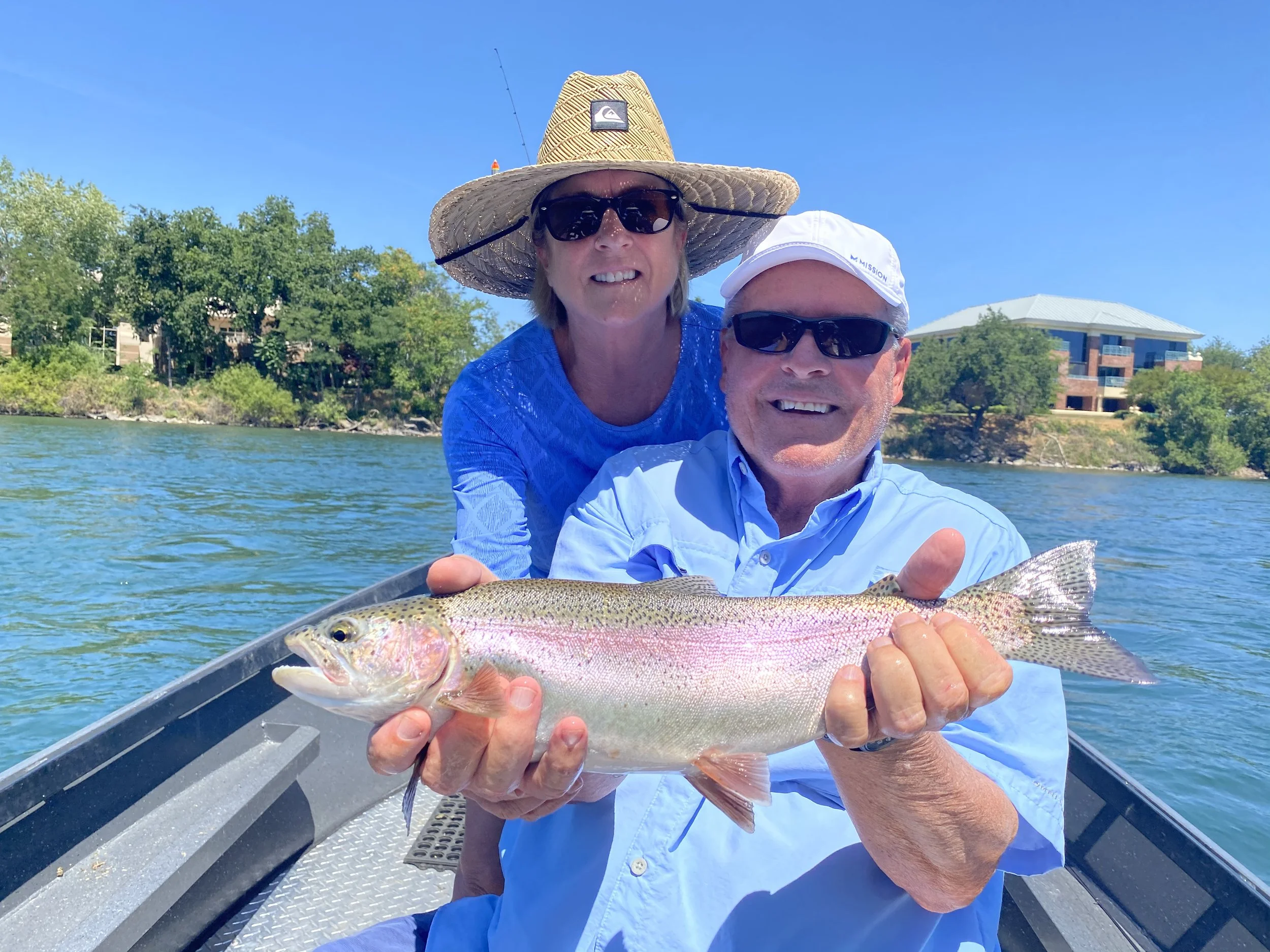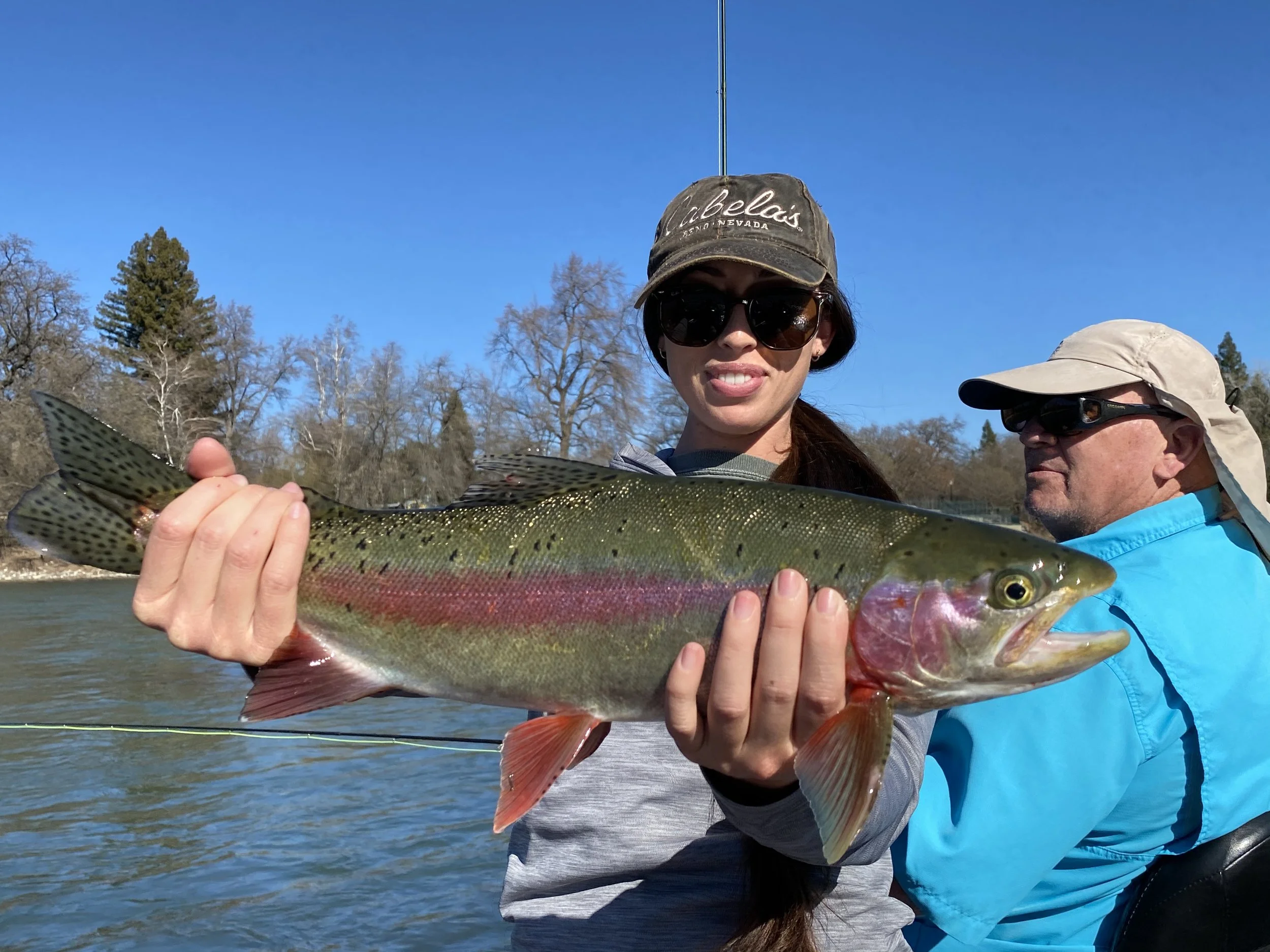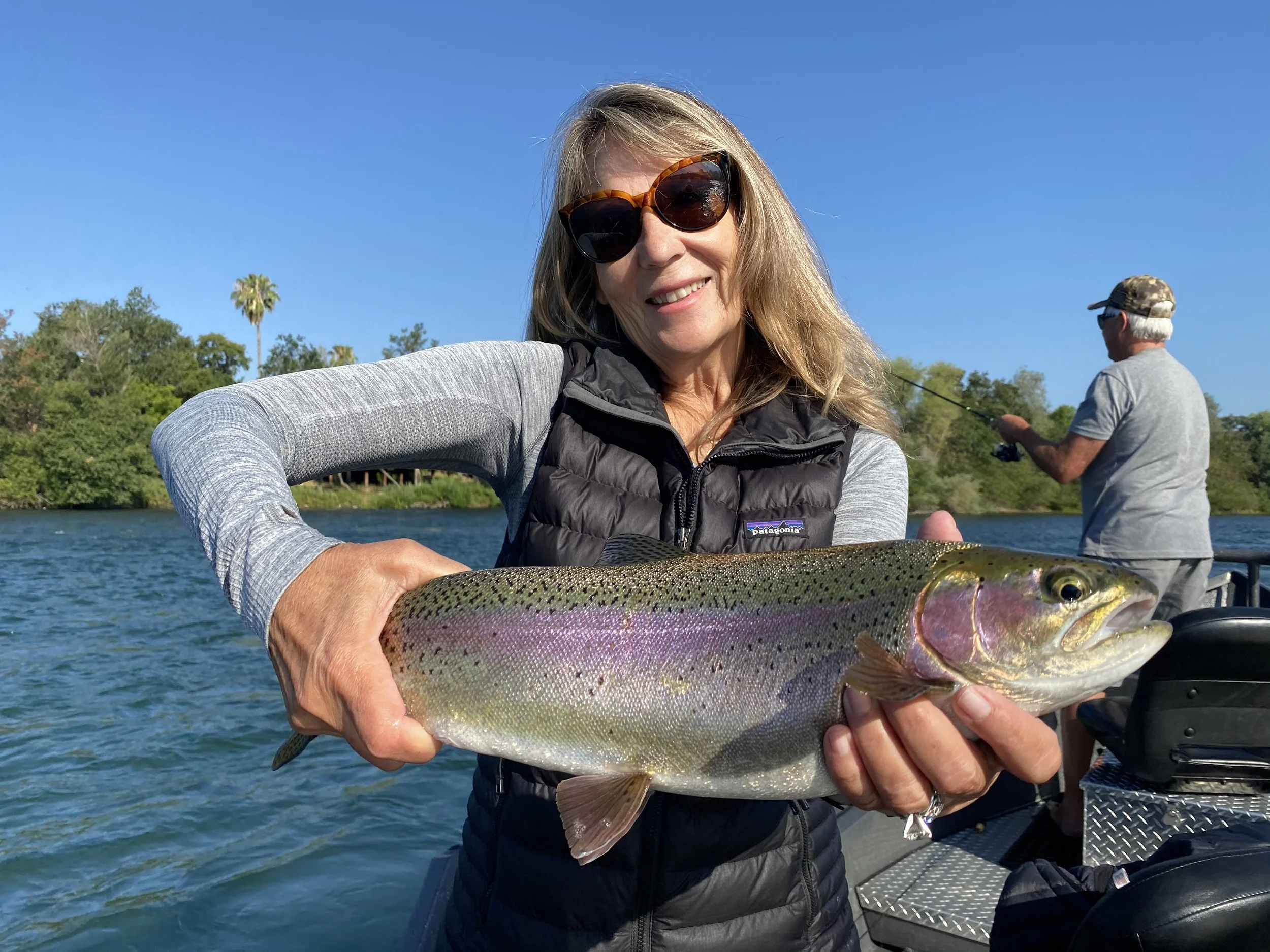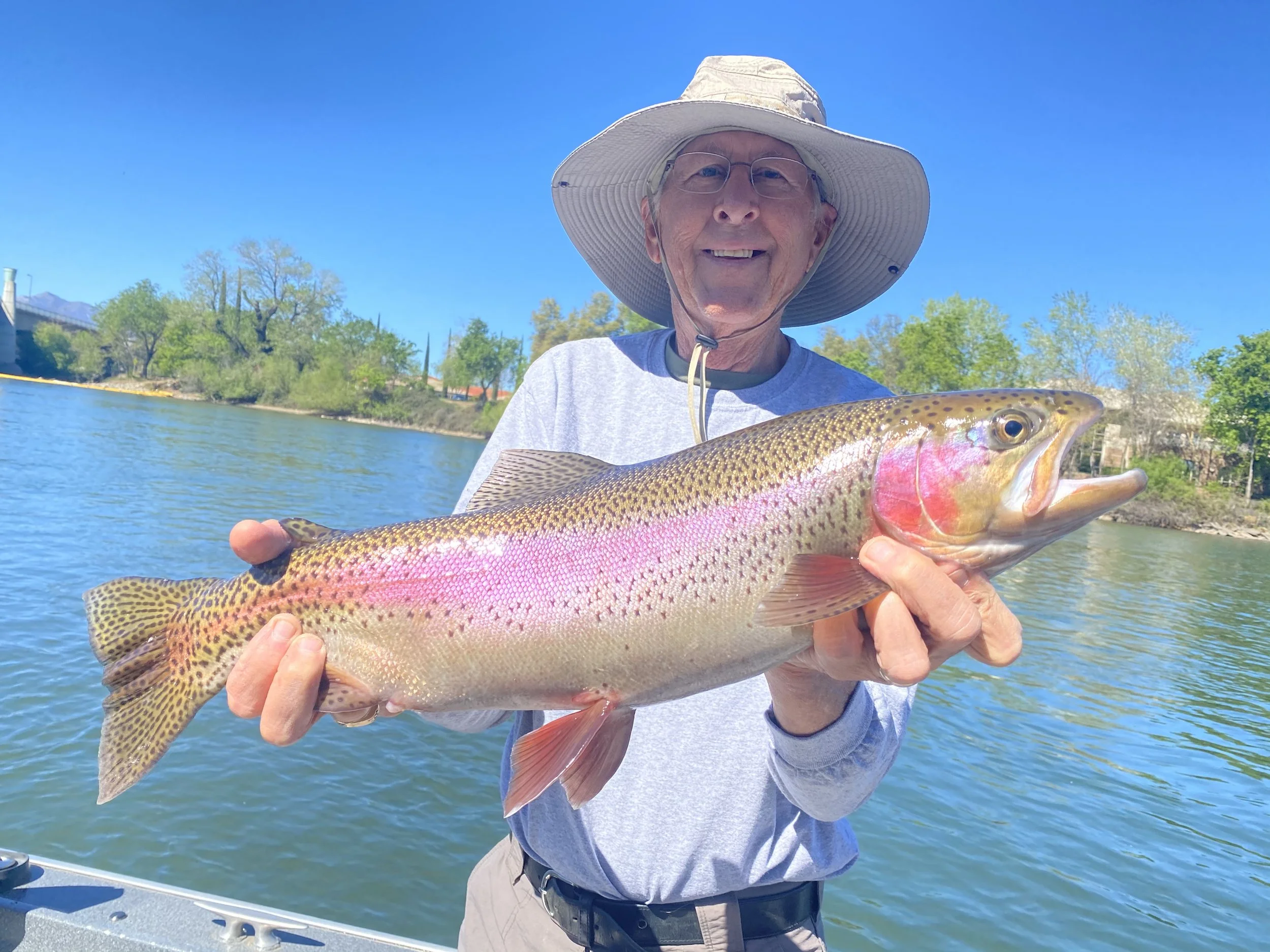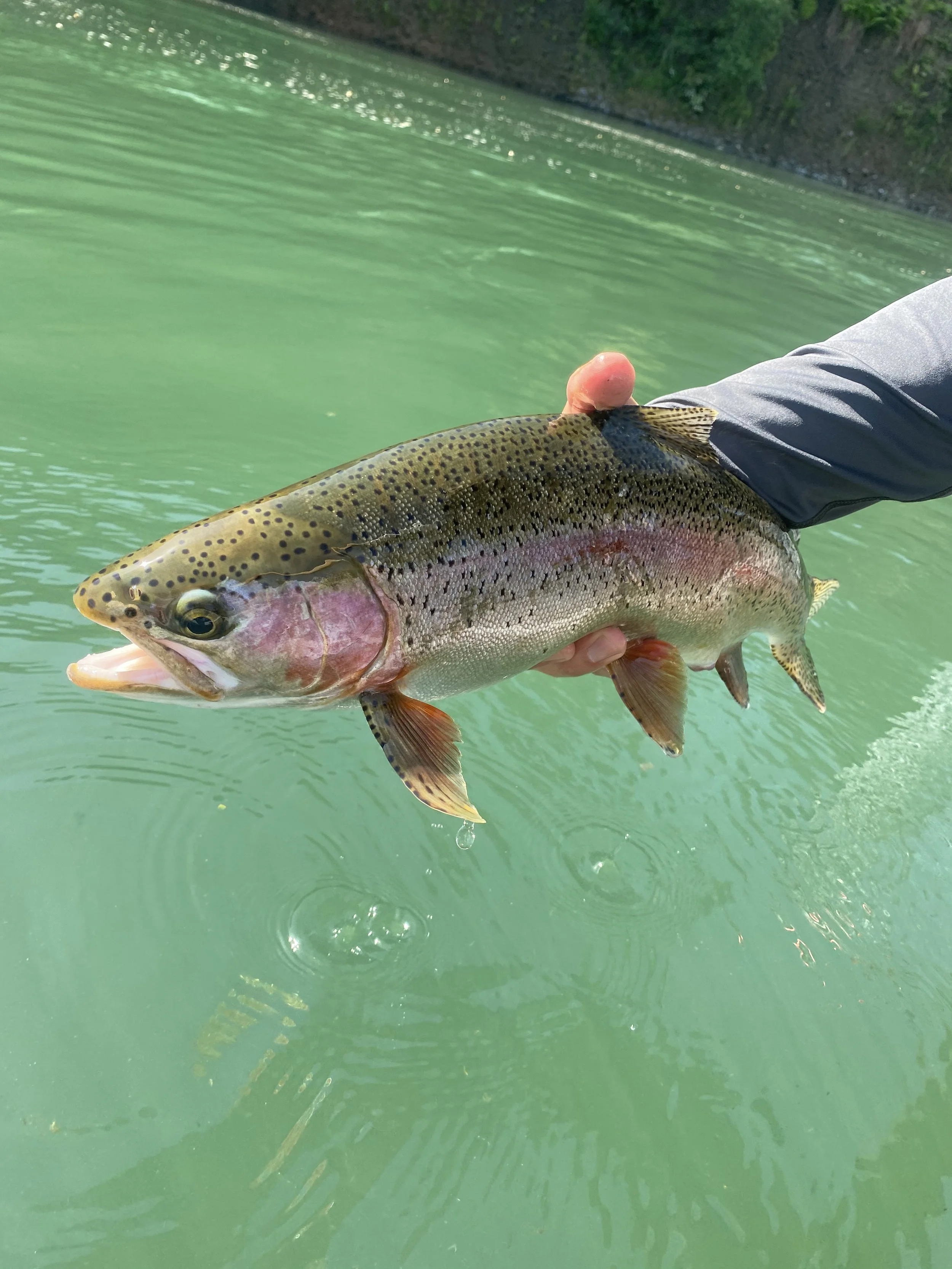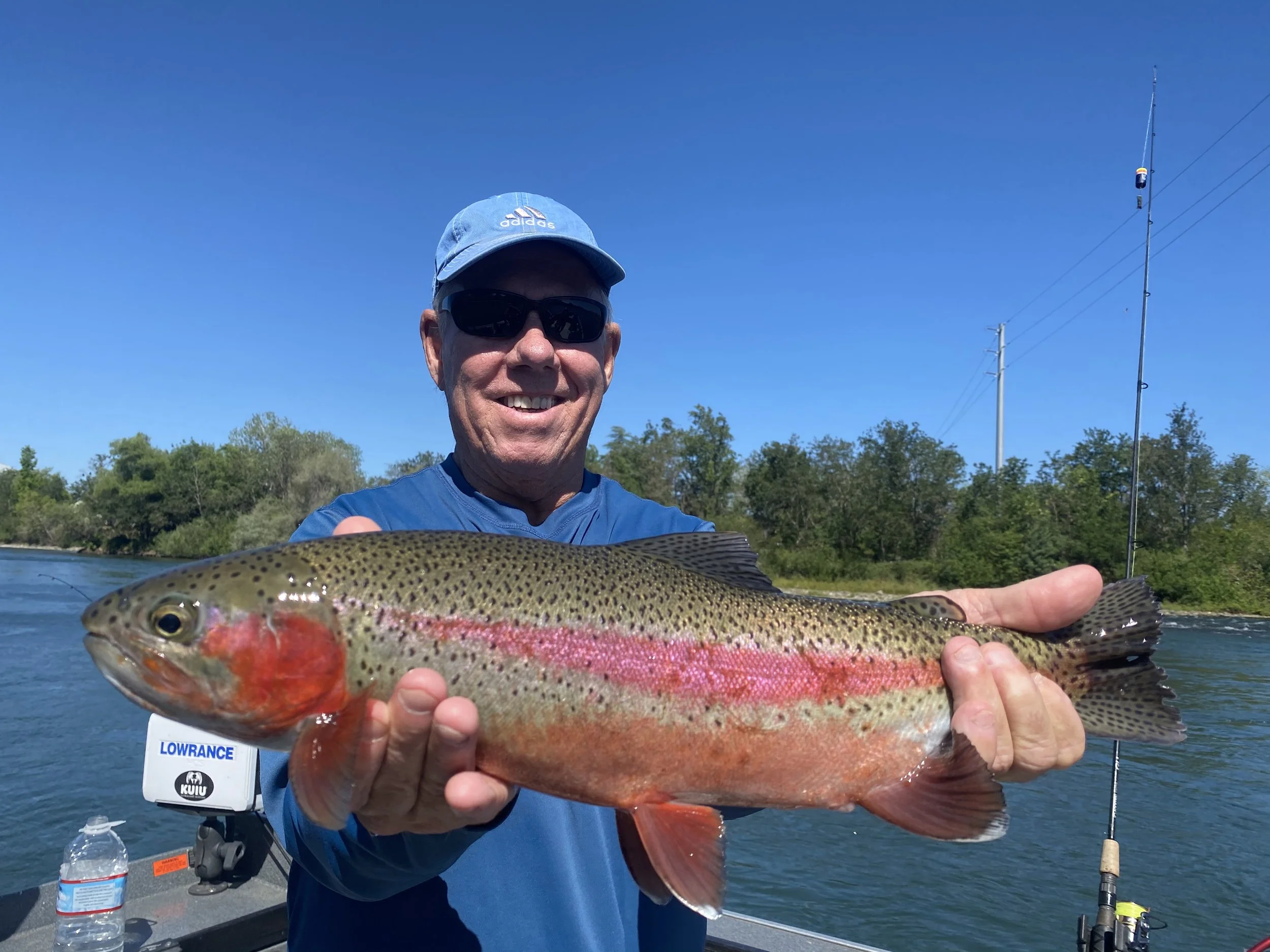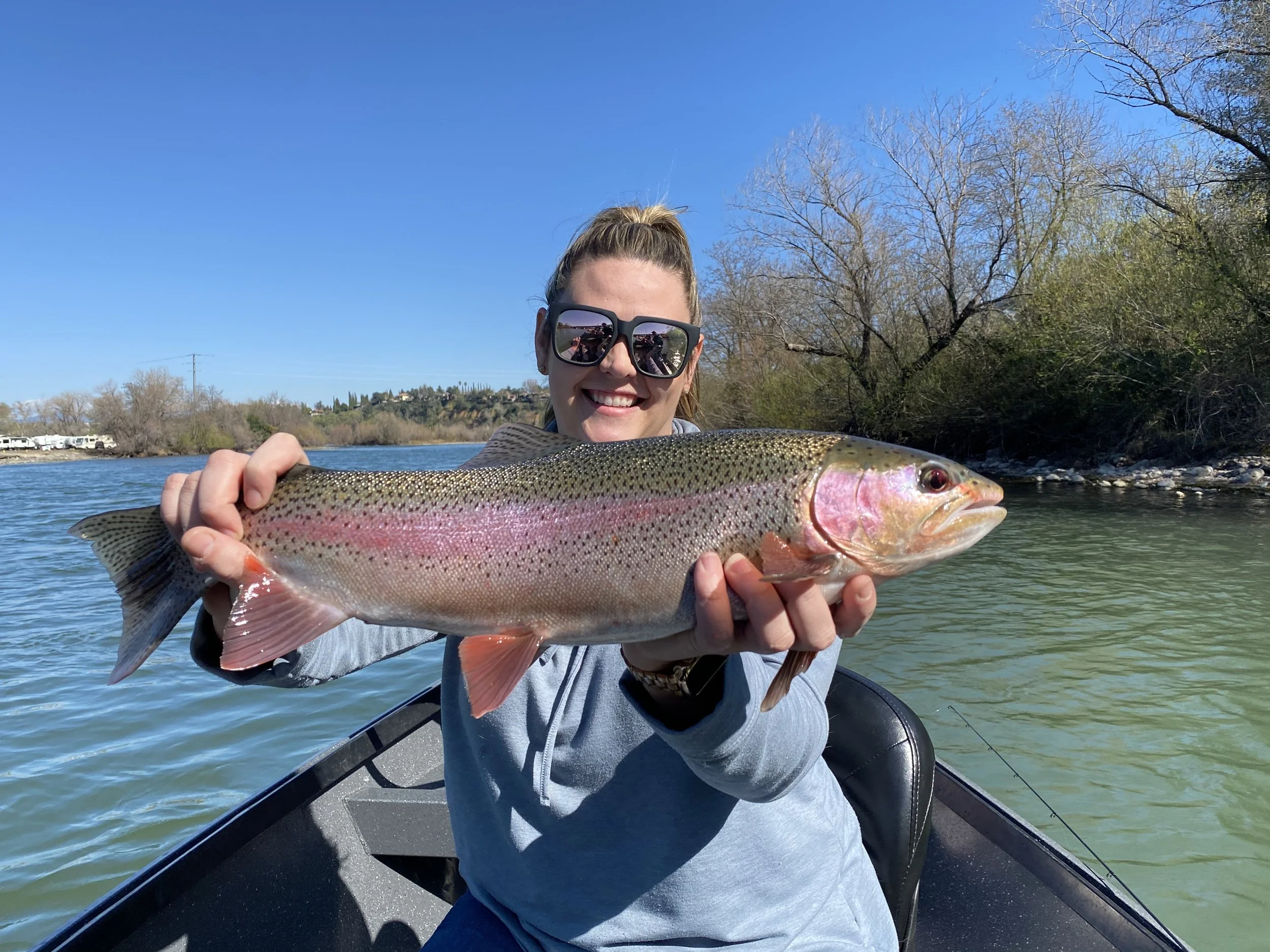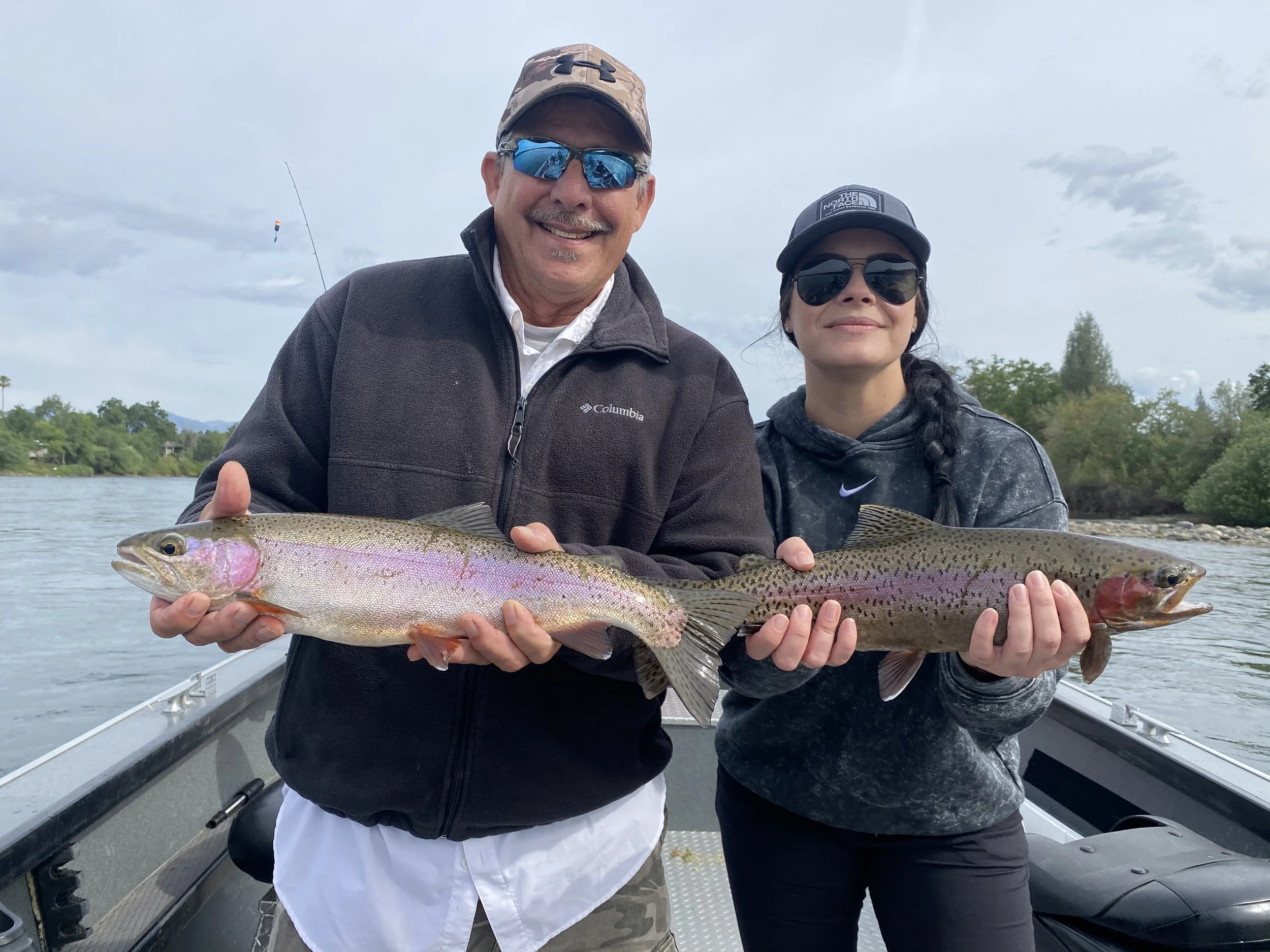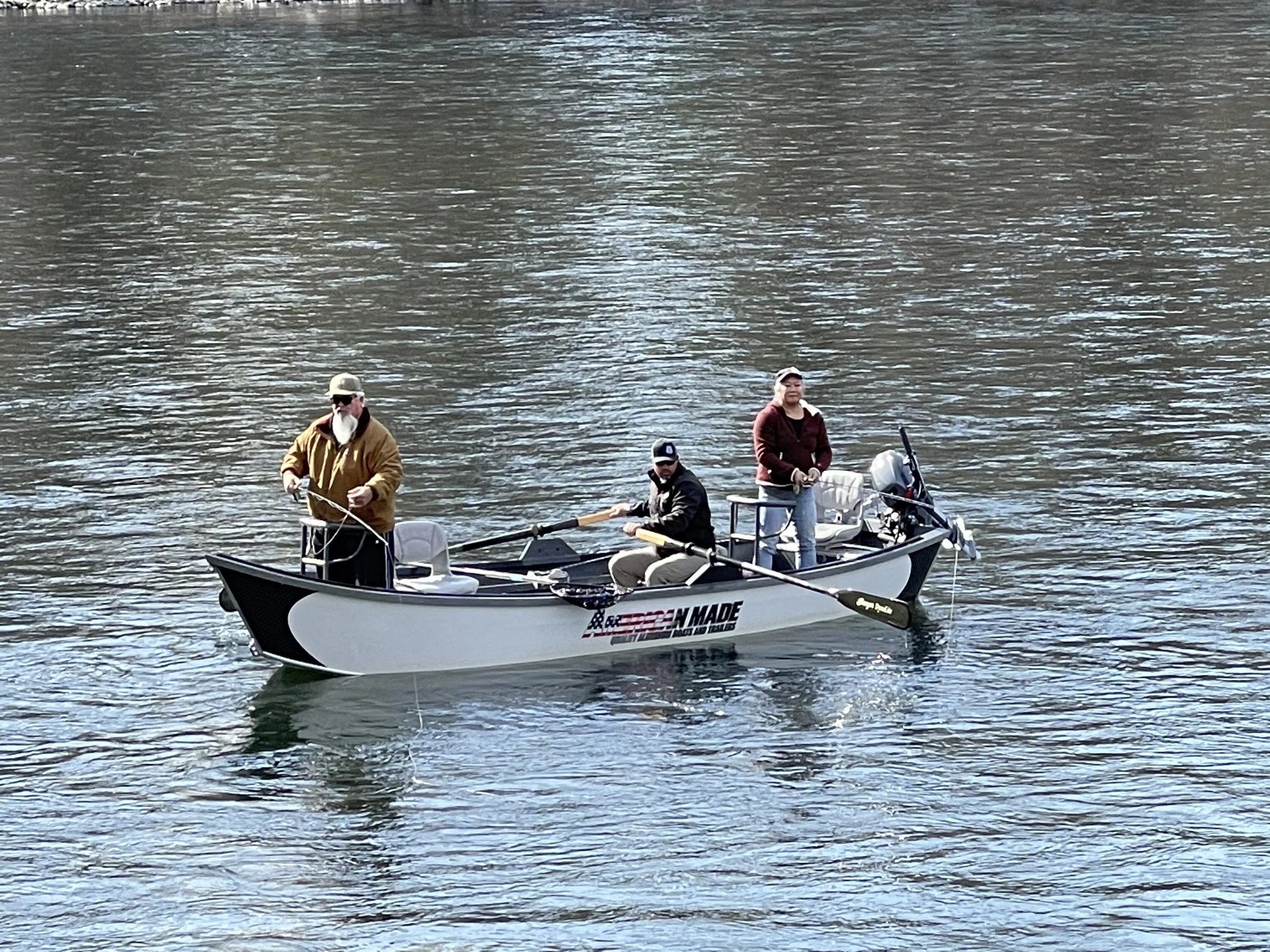Sacramento River wild Rainbow Trout fishing is nothing short of world class, I am booking trips from March through July, this is the peak time to fish for these hard fighting wild Rainbow/steelhead. Our average day is 20 to 50 fish a day, you will likely make this a yearly event once you fish this section in Redding ca, on the Sacramento River with Justin Thompson.
Spring time is the prime time! Now booking spring time/summer 2025!! world class Sacramento River wild rainbow/steelhead guided fishing trips!!
Action packed with 4 to 6 lb average wild hard pulling fish. With 20 to 50 fish day’s. If that doesn’t sound like fun then I don’t no what does, book your trip today!
I am currently fishing the Trinity River for steelhead, just looking ahead spring will be here before we no it. Now is the time to book your trip for March through July for this Amazing fishery! I will be offering fly or spin fishing trips on the Sacramento River!
26’ power boat for our spin fishing trips and our 19’ drift boat for the fly fishing!!
Lower Sacramento wild rainbow/steelhead
Certainly! Here’s a deeper dive into the habitats and life cycles of rainbow trout and steelhead, including their behaviors and environmental needs.
### Rainbow Trout
1. **Habitat Preferences**:
- **Riffles and Pools**: Rainbow trout are often found in riffles—areas of fast-moving water where oxygen levels are higher. They seek out pools for resting and hiding from predators.
- **Temperature Tolerance**: While they prefer cooler waters, they can tolerate temperatures up to around 75°F (24°C) for short periods. Prolonged exposure to higher temperatures can be detrimental.
2. **Diet**:
- They are opportunistic feeders. Their diet consists mainly of aquatic insects (like mayflies and caddisflies), crustaceans, and smaller fish. Their feeding habits can change based on the available food sources.
3. **Reproduction**:
- Spawning typically occurs in spring and early summer. Female trout create nests, called redds, in gravel areas where they lay eggs, which the male fertilizes. The eggs typically hatch in about 4 to 6 weeks, depending on water temperature.
### Steelhead
1. **Life Cycle**:
- Steelhead are unique among trout because they are anadromous, meaning they migrate from freshwater to saltwater and back to spawn. They spend a significant part of their lives in the ocean before returning to freshwater to reproduce.
- Steelhead may spend one to three years in the ocean before returning to their natal streams to spawn, which typically occurs in late fall to early spring.
2. **Habitat During Migration**:
- During their time in the ocean, steelhead prefer coastal waters, where they often follow currents and feed on smaller fish and invertebrates. Upon returning to freshwater, they navigate upstream to find suitable spawning sites.
3. **Environmental Factors**:
- Steelhead are sensitive to changes in water quality and habitat degradation. Factors such as pollution, habitat loss, and changes in water flow can significantly impact their populations.
4. **Conservation**:
- Many steelhead populations are considered threatened or endangered due to habitat loss, overfishing, and other environmental pressures. Conservation efforts focus on habitat restoration, improving water quality, and managing fisheries sustainably.
### Conclusion
Both rainbow trout and steelhead play crucial roles in their ecosystems, serving as both predators and prey. Understanding their habitat needs and life cycles is essential for effective conservation and fishing practices. Protecting their environments ensures that future generations can enjoy fishing and the beauty of these remarkable species in their natural habitats.
https://pautzke.com/

